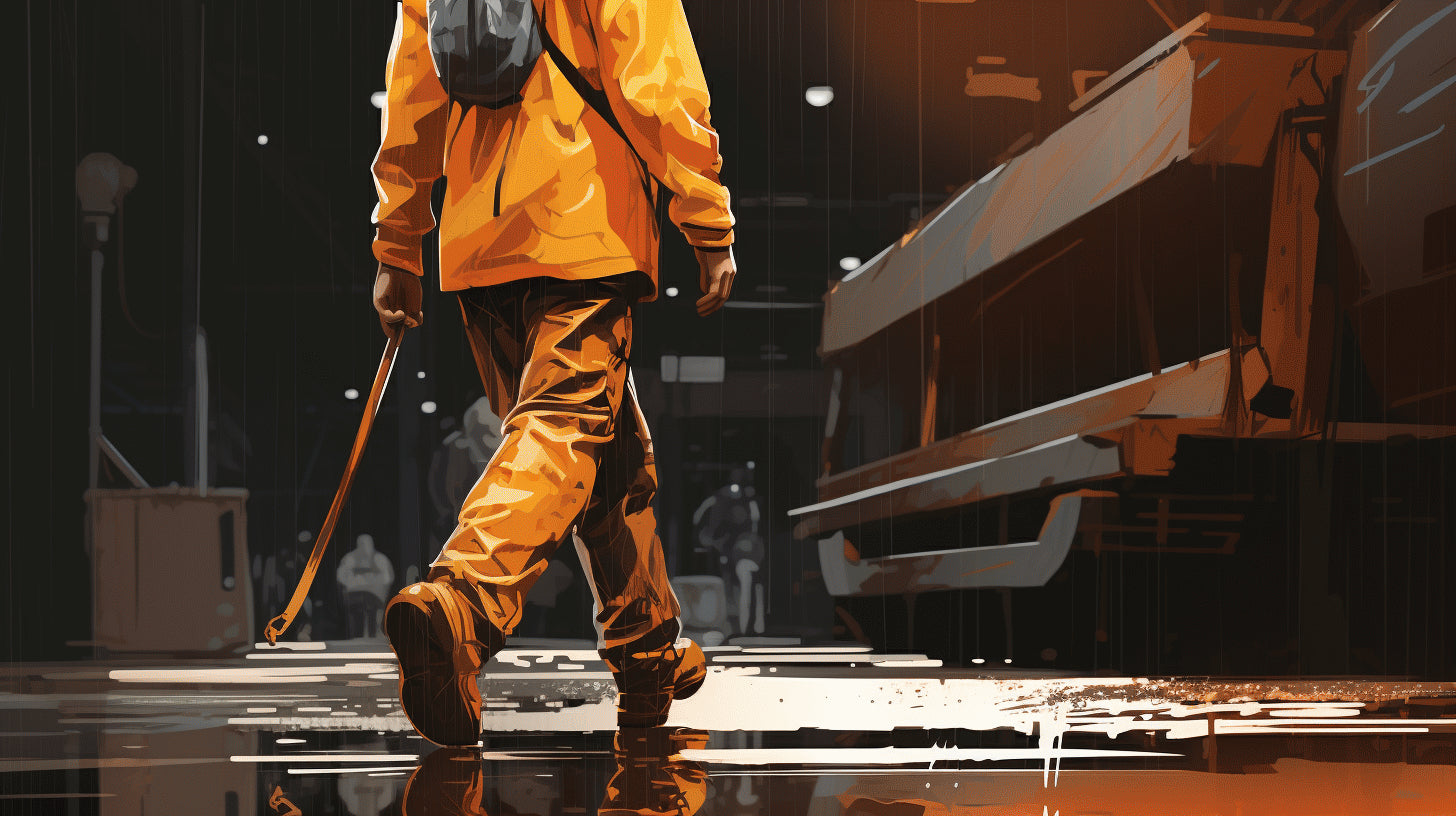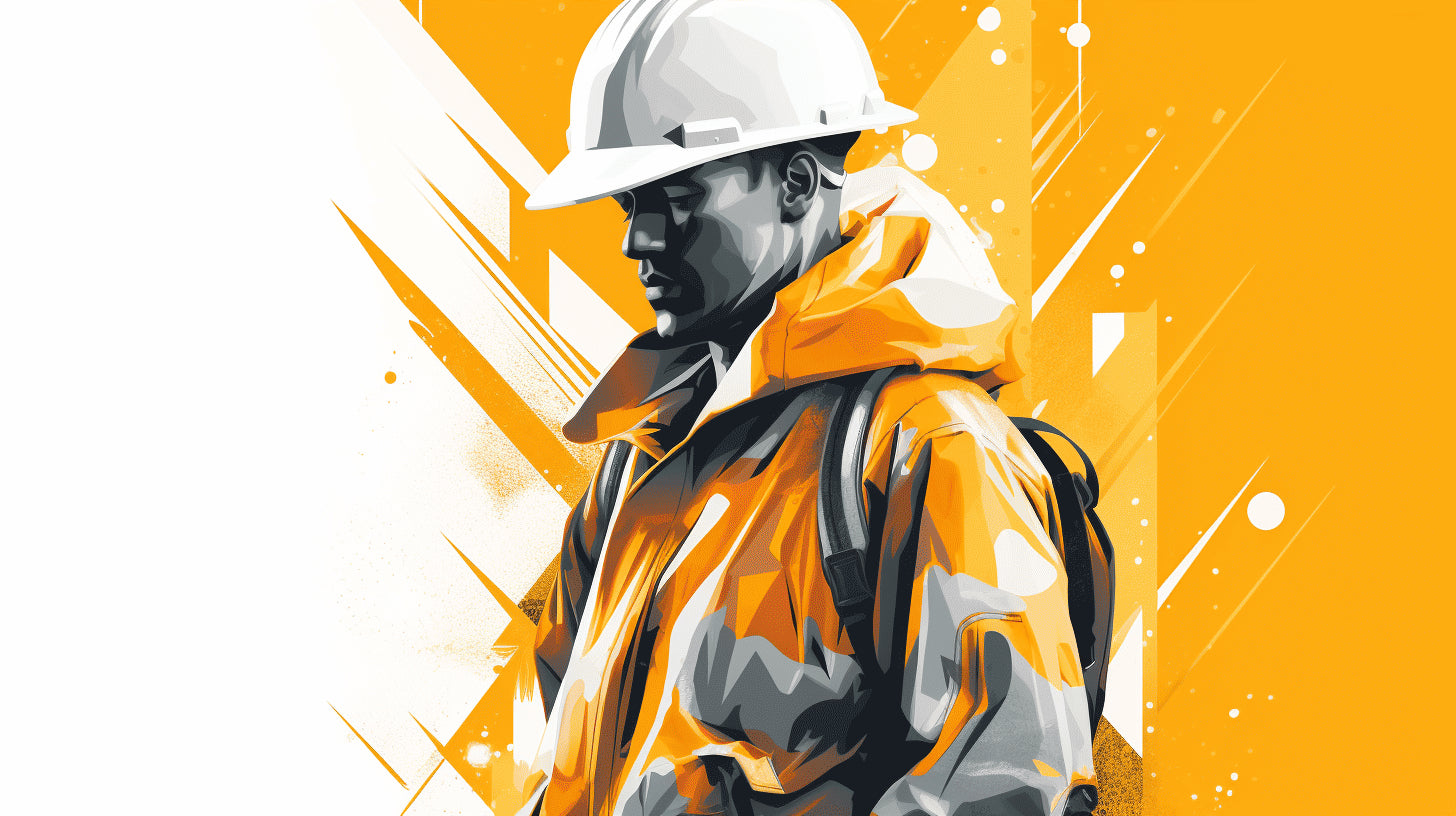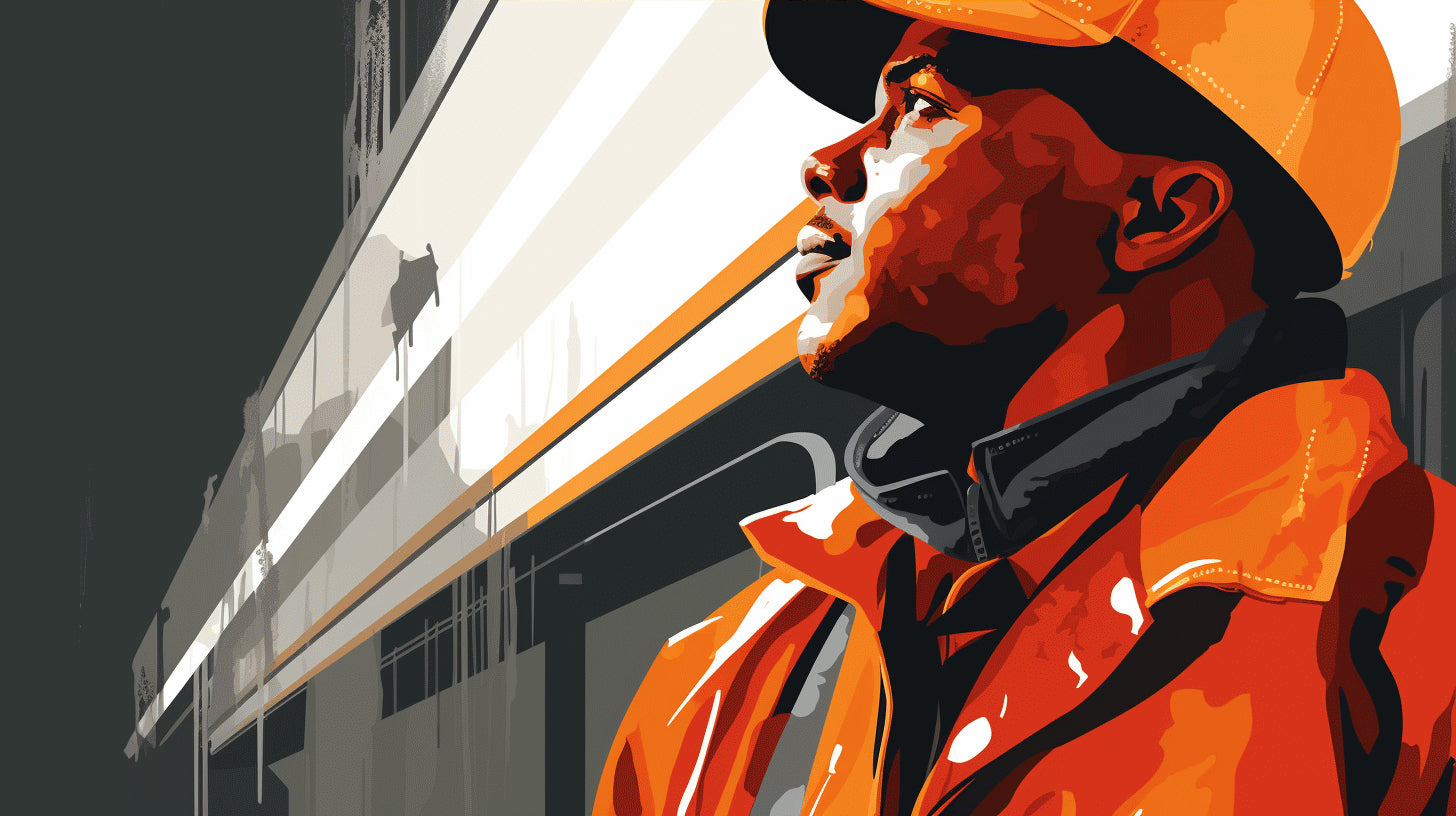The uncontrollable weather is one of the biggest challenges faced by outdoor workers, especially those in the construction industry. As they brave the elements, protective gear becomes their first line of defense. Among these, high-quality rain gear stands out in terms of importance. Why so? Because whether it's a light drizzle or a massive downpour, staying dry is crucial. At this point, you might be asking, "What should I know about rain gear for construction?". Well, don't fret! This article will walk you through the ins and outs of rain gear. We'll dive into everything from market trends, material composition, health and environmental considerations, even to performance and maintenance tips, offering a comprehensive look at waterproof and tear-resistant options for construction. So, grab a cup of coffee, sit back, and let's delve into the world of rain gear designed to stand up against tough conditions.
Rainwear Market Size and Growth
It's truly an exciting time for the rainwear industry. From trench coats and rain boots to umbrellas and more, the demand for these essential products is on the rise globally. Let's delve deeper into the specifics and grasp an understanding of how the market is fairing, beginning with its size.
Market Size
The global rainwear market has been making a significant splash in recent years, with a valuation pegged at a staggering USD 3,864.7 million in 2022. This impressive figure points towards a collection of factors - growing consumer consciousness towards effective rainwear, innovative product designs, and evolvement in material technology.
There's a subplot to this success story - Waterproof breathable textiles. This segment has also been performing exceptionally well, demonstrating its worth with a market size valued at USD 1835.2 million in 2022.
However, when we widen our focus to the global waterproofing systems market, we start witnessing the larger picture. It was valued at a splendid USD 61.3 billion in 2022, proving that the need for protection against the elements extends beyond just protecting our outfits- it's about safeguarding our buildings, vehicles, and more against water damage.
Compound Annual Growth Rate (CAGR)
Seasons may change, but the global rainwear market's growth potential seems as steadfast as ever. From our calculations, the market is expected to grow at a Compound Annual Growth Rate (CAGR) of 5.5% starting from 2023.
These figures relay the positive prospects for the rainwear industry. From incremental contributions by individual consumers opting for that sleek, effective raincoat to broader-scale implementation of waterproofing systems in construction and industrial applications, the market is primed for growth.
Ultimately, these promising dimensions make the rainwear industry a behemoth to be reckoned with. Its size, compounded with its expected growth, makes it a significant player in the broader fashion and construction industry narratives. Meanwhile, the substantial valuation of related segments such as the waterproof breathable textiles indicate a deeper, growing trend towards enhanced utility and functionality in our everyday wear. The future indeed looks bright, or rather, shiny and water-resistant.
Just as rain provides nourishment to life, the evolution and growth across the global rainwear market appear set to nourish the industry. It's time to brace for the bright forecast ahead with optimism. That's not just the sound of raindrops you're hearing; it's the sound of opportunity.
Materials Used in Rain Gear Construction
Stepping out into the great outdoors, be it for an adventurous hike or a leisurely stroll around the city, you might have seen the mighty effects of an unexpected rainfall thrashing down, leaving you wishing for robust rain gear to keep you dry. The star of this much-needed protection from the elements? Predominantly, the choice of materials used in the construction of these indispensable garbs. So, let's dive in and explore the varied materials used in rain gear construction.
Types of Waterproof Materials
Rain gear is made from a range of different materials, each with their own benefits and drawbacks, based on the desired application, cost, and durability:
- Rubberized raingear is one of the earliest waterproof materials used due to its excellent water-repellent characteristics and durability, although it offers little breathability.
- Coated nylon is a light, water-resistant material that caters to the needs of the budget-conscious, although the coating, usually polyurethane, can diminish with wear and time, reducing the gear's overall water resistance.
- Gore-TEX, a brand synonymous with rain protection, is a patented material that combines durability, water-resistance, and excellent breathability. However, this high-quality material often comes with a higher price tag.
Durable Water Repellent (DWR) Coatings
Modern rain gear often employs DWR coatings to improve water resistance. These coatings, applied to the outer shell of the rain gear, are typically made of nylon or polyester and designed to make water bead up and roll off the garment rather than soaking in. Over time and with regular wear, these coatings may become less effective, but can often be reapplied to prolong the life of the gear.
High-End Rainwear Materials
In the pursuit of excellent performance and longevity, high-end rainwear often employs sophisticated materials and construction. A notable player in this field is the use of fluoropolymer materials that boast high durability, excellent water resistance, and equally impressive breathability. These materials are often the choice for active outdoor enthusiasts who require gear that can withstand harsh weather conditions whilst ensuring comfort.
Inherently Waterproof Materials
The rain gear manufacturing industry is progressively moving towards inherently waterproof materials. These materials, unlike DWR coated or treated materials, are intrinsically water-resistant without the need for additional treatments or coatings. They provide a long-lasting waterproof solution that is not affected by wear and tear or washing.
Welded Seams and Three-Layer Construction
To ensure complete rain protection, manufacturers pay keen attention to the garment construction. Welded seams, where the pieces of fabric are fused together rather than stitched, are commonly seen in high-quality rainwear. This technique prevents water from seeping in through the seams, a common weak point in rain gear.
Additionally, a three-layer construction - comprising an outer shell, a waterproof layer, and an inner liner - is often employed. This design not only safeguards against rain but also enhances the overall durability and comfort of the gear.
Exposure to the elements needn't dampen your spirits or put a halt to your outdoor activities. Understanding the materials used in rain gear construction can help you make an informed decision when purchasing your next raincoat or umbrella, ensuring you stay dry and comfortable, come rain or shine.
Health and Environmental Considerations
A comfortable raincoat can be a lifesaver in unpredictable weather. However, the materials used in their manufacture often raise health and environmental considerations that we can't afford to overlook. A significant culprit here is 'forever chemicals,' also known as Perfluoroalkyl and Polyfluoroalkyl Substances (PFAS).
Perfluoroalkyl and Polyfluoroalkyl Substances (PFAS)
PFAS are a group of man-made chemicals that have been in use since the 1940s. You can expect to find them in your favorite, waterproof raincoat. Why? These chemicals provide that essential water-resistant quality. However, PFAS tend to persist in the environment and our bodies for a long time – a trait that has earned them the nickname 'forever chemicals.'
Many raincoats contain PFAS, but manufacturers are now listening to consumer concerns and health warnings. As a result, many are actively developing and introducing PFAS-free materials.
A leading concern with PFAS is their potential impact on our health. Scientific studies point to increased cholesterol levels, immune system problems, and even an enhanced likelihood of some types of cancer. Of course, not every raincoat wear will experience these effects, but the risk is there.
Safety Precautions
So, what can you do to stay safe while also staying dry? Opting for PFAS-free rain gear is a great start. Certain manufacturers offer these safer alternatives, giving you peace of mind without sacrificing comfort or functionality.
Also, it may be helpful to:
- Do your research before making a purchase.
- Check labels and product descriptions carefully.
- Prioritize sustainable and eco-friendly brands.
Remember, your choice of rainwear isn't just about comfort or style but also about health and sustainability. It's about making choices today that will give you peace of mind tomorrow.
Remaining knowledgeable about what's in your raincoat can reduce potential risks— a little consideration can go a long way toward mitigating health and environmental impacts. This approach doesn't just protect you, but it helps protect the planet too. By choosing better, we can all make a difference.
Performance and Maintenance of Rain Gear
When it comes to surviving in harsh and wet weather conditions, rain gear is our best armor. It shields us from severe weather, sustaining our comfort, warmth, and safety during outdoor activities. However, as with any piece of outdoor equipment, rain gear requires regular maintenance to keep it functioning at its peak. Understanding the features of different rain gears and ways to sustain their durability can significantly extend the lifespan of these essential pieces of equipment.
Optimal Performance and Care
To maximize the lifespan and performance of your rain gear, regular treatment or washing is advised. But it's not as simple as just throwing it in your washing machine; there's a bit of science behind the cleaning process. Your rain gear is equipped with a unique coating which helps in repelling water, and incorrect cleaning methods could strip this layer away.
When cleaning, stick to gentle and specialized cleaning agents specifically meant for waterproof clothing over harsh detergents. This ensures that the water repellant layer remains intact while efficiently cleaning the gear. Besides, air-drying, as opposed to machine drying, can further help preserve the longevity and overall structural integrity of the rain gear.
Adopting these practices can help maintain the gear's inherent waterproofing features, such as welded seams and three-layer construction. These components, marked by high waterproof ratings, are meticulously designed to keep you dry regardless of the weather condition.
Durability and Tear Resistance
Rain gear's durability largely depends on the fabric quality, which affects its resistance to tears. To optimize your purchase, it's essential to pay attention to the fabrics from which the gear is made. Certain materials offer superior durability and tear resistance than others.
Notably, rain gear made from polyester fabric carries high resistance to rips and tears. This attribute, combined with the fabric's inherent strength and abrasion-resistance, makes polyester-based rain gear a reliable option for long-term use.
When investing in rain gear, it's paramount not just to consider immediate needs but also to evaluate long-term performance and durability. With the correct information, regular care, and maintenance, your rain gear can remain an essential asset for many seasons of adventure.
Well-Known Rain Gear Products and Brands
When you're venturing outdoors, weather unpredictability is a well-accepted reality; hence, being well-equipped is necessary. Among essentials, a good quality rain gear is indispensable. Over time, multiple brands have gained customer trust by providing reliable rain gear options, and two notable names are Patagonia and The North Face. They've developed their very own proprietary fabrics that offer unparalleled waterproof abilities, making them an ideal choice for outdoor enthusiasts.
Rain gear is available in various types, including jackets, pants, suits, and ponchos, to suit different needs. Top-tier brands like Patagonia and The North Face have also made strides in improving their gear's durability by incorporating PVC-coated polyester fabrics known for its durability and tear resistance. Brands also offer reinforced versions with added durability to elbows and zippers specifically designed for challenging conditions.
When considering the 'gold standard' in rain gear, Gore-Tex must be mentioned. Its ability to provide breathable, waterproof protection makes it the preferred choice for many outdoor adventurers.
For the backpackers and adventurers who prioritize lightness without compromising on durability, ultralight rain gear has become increasingly popular. Products to note in this category would be ZPack's Vertice Rain Jacket and the First Lite Vapor Stormlight Jacket.
Robust and reliable gear such as the Carhartt PVC rain gear is renowned in the heavy-duty workwear sector. Their products combine waterproof, wind-resistant, and heavy-duty durability, easily withstanding demanding outdoor conditions.
Moreover, some items have garnered praise for exceptional durability, like the Frogg Togg's jacket. It has withstood the strenuous journey of through-hiking on the Appalachian Trail, clearly illustrating its resilience.
For hiking enthusiasts that value minimalism in their gear, the ZPacks Challenger Rain Jacket and Pants are worth mentioning. Esteemed as some of the best ultralight options available, they offer substantial protection without the extra weight.
While it's exciting to invest in high-quality rain gear, remember that maintenance is equally crucial. Regular cleaning can significantly prolong the durability and tear resistance of your gear, ensuring that it continues to provide dependable protection when you need it most.
As seen, strategically selecting your rain gear can make a huge difference in your outdoor experiences, whether that's a simple day hike or an intense outdoor expedition. The brands and products mentioned above are celebrated for their reliable performance and durability, offering potential buyers a great starting point.
Selection Guide for Rain Gear
Choosing the perfect rain gear is more than just staying dry in a downpour. It's about weather resistance, breathability, comfort, and ensuring you get good value for your money. But with significant variances in price and quality, picking the right gear can seem daunting. This is why we’ve put together a comprehensive guide to make your selection easier and more informed.
Considerations Before Buying
Before pulling out your credit card to buy new rain gear, it's essential to evaluate several factors. Here are some crucial things to keep in mind:
- Weather Resistance: The gear should be capable of withstanding heavy rain without soaking you. Look for features like waterproof coatings and tight-seam construction.
- Breathability: Even in a downpour, you don't wish to feel like you're in a portable sauna. Therefore, your gear should be breathable to prevent excessive sweating.
- Comfort: Uncomfortable gear can ruin your day. Ensure your selection offers a comfortable fit, adjustable features, and does not hamper mobility.
- Price vs. Quality: Quality varies enormously with price when it comes to rain gear. Don't be lured by lower costs, as they may compromise effectiveness and durability.
Bear in mind that thorough research before purchasing is imperative. It's tempting to buy the first gear you find that fits your budget, but it’s much wiser to balance price with performance.
Importance of Customer Reviews
Customer reviews act as a goldmine of information, providing real-world insights into a product’s durability and tear resistance, two factors often overlooked in product descriptions. Consumers are typically honest about their experiences, offering valuable perspective that can potentially save you from a disappointing purchase.
Remember, rain gear that rips after a few uses or leaks at the seams isn't a wise investment, regardless of how affordable it may have been initially. From reviews, you can find out whether a product lives up to its claims or if it’s merely marketing hype.
Putting in the time to read through several reviews will pay off in the long run - helping you make a well-informed decision about your ideal rain gear. By combining this information with the key considerations previously mentioned, you're well on your way to selecting rain gear that's perfect for you!
Conclusion
From understanding the significance of the rainwear market and the materials used in constructing durable, waterproof gear, to taking into account the health and environmental factors involved, there's certainly a lot to absorb. The performance and longevity of rain gear also depend greatly on its maintenance and the particular brand itself.
When investing in rain gear, it's important to select an item that balances durability, comfort and environmental responsibility. Consider reviewing genuine customer reviews before settling on your purchase.
As per user satisfaction and product performance, Hurricane Raingear is committed to offering 100% waterproof and rip-resistant rain gear. With its focus on customer comfort, safety, and satisfaction, the brand has been successful in establishing trust among their users. Their gear ensures unrestricted movement with reflective 3M striping for increased visibility, keeping you safe in poor visibility conditions.
In the end, it really boils down to your personal need, environmental consciousness, and the kind of work you'll be doing in the rain gear. Whatever your requirements may be, staying informed about the options available will certainly aid in your final choice. Remember, the goal is to stay dry, safe, and comfortable, no matter the conditions!
Frequently Asked Questions
-
What are the top rain gear options for tough construction conditions?
Some of the top rain gear options for tough construction conditions are: 1. Waterproof jackets with reinforced seams, 2. Tear-resistant pants with water repellent coating, 3. Heavy-duty waterproof boots with slip-resistant soles, 4. Waterproof gloves with a grip for handling tools, and 5. Waterproof hats with wide brims to protect the face.
-
What features should I look for in waterproof jackets for construction work?
When choosing a waterproof jacket for construction work, look for features like reinforced seams, adjustable cuffs and hood, waterproof zippers, breathability, and reflective elements for visibility in low-light conditions.
-
Are tear-resistant pants necessary for construction work in the rain?
Yes, tear-resistant pants are highly recommended for construction work in the rain as they provide durability and protection against sharp objects and rough surfaces. Look for pants made from materials like ripstop nylon or reinforced denim.
-
What should I consider when selecting waterproof boots for construction work?
When selecting waterproof boots for construction work, consider factors like slip-resistant soles, steel toe caps for safety, ankle support, waterproof materials such as rubber or leather, and comfort features like cushioned insoles.
-
Can I use regular gloves for construction work in rainy conditions?
Regular gloves may not provide adequate grip and protection in rainy conditions. It's recommended to use waterproof gloves with a grip designed specifically for construction work. These gloves will ensure a secure grip on tools even when wet.























Leave a comment
This site is protected by hCaptcha and the hCaptcha Privacy Policy and Terms of Service apply.